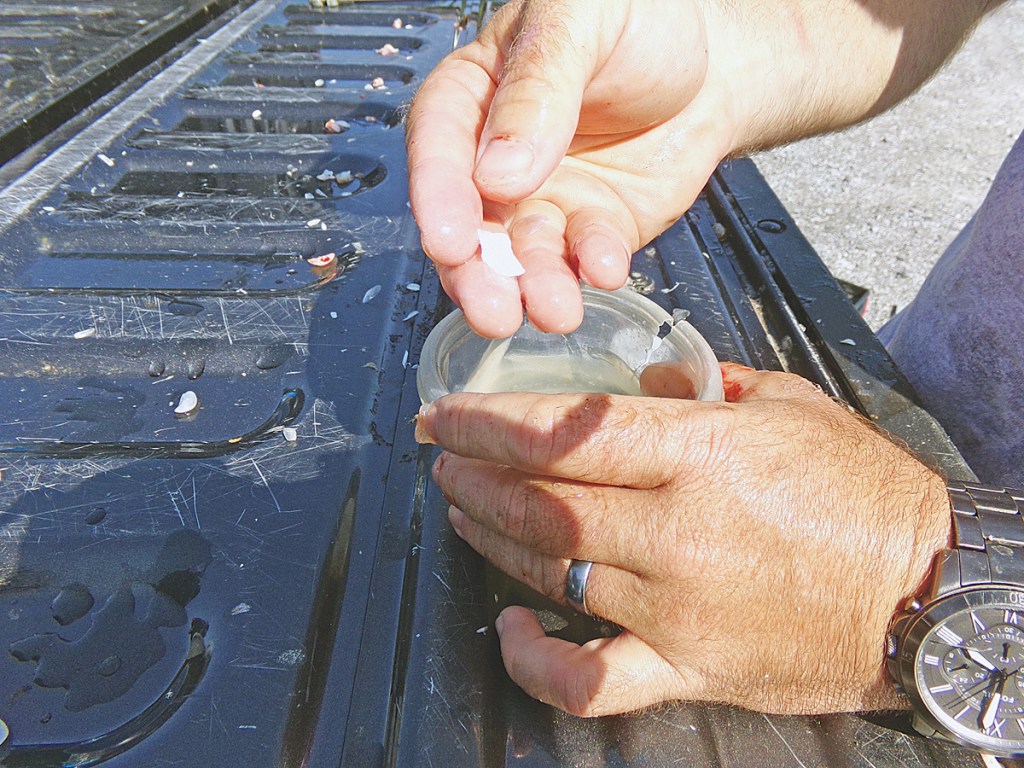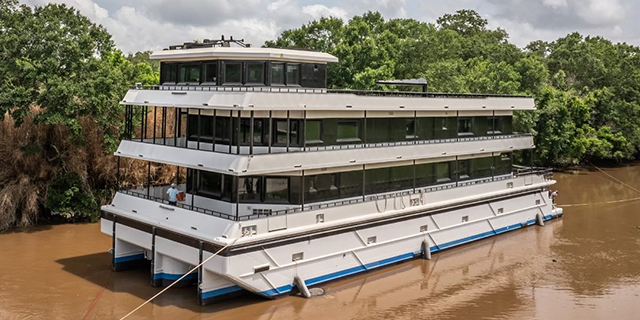A cut here, slice there and you have fish’s age
Published 12:45 pm Sunday, May 26, 2019

- Each otolith was cleansed by marine biologist Ben Young before being put in an envelope to be sent to the LDWF’s Age and Growth Lab in Baton Rouge.
CYPREMORT POINT — Ben Young had nine redfish laid out on the open tailgate of the pickup truck Monday afternoon at Quintana Canal Boat Landing.
Young had his work cut out for him, work that will help State Department of Wildlife and Fisheries marine biologists analyze the redfish population in and around Vermilion Bay. The LDWF biologists use the critical information from here and all along the coast to manage the popular gamefish.
It all starts with the extraction of two otoliths from each redfish.
The bones, about the size of a fingernail, are located behind the brain in the ear cavity of the fish and are surrounded by a pocket of fluid, within a shell of sorts that encloses each one. As the fluid moves, it signals to the brain, enabling the fish to remain upright as it swims.
The otoliths tell the biological tale of the redfish. They are used to determine the age of the fish in a surprisingly exact process.
Sure, written information on the redfish is important, the length, weight and sex, which Young recorded on a paper form for each redfish after he was surprised, pleasantly, that Clay Peltier of New Iberia returned from a fishing trip to Marsh Island with nine of them. Young, a Biologist 3 who works out of the Lafayette office in the LDWF’s Coastal Study Area 6, was at the boat landing to get harvest results from opening day of the shrimp season in Zone 2.
“I just got lucky today. Nobody else caught fish,” Young said as he prepared to work on the redfish.
“I’ve got just enough room (on the tailgate for the redfish he lined up side by side). I’m glad you didn’t catch bigger ones,” he said with a chuckle as he prepared to work on the redfish.
Peltier, who retired in 2017 after eight years as vice president of sales for the Louisiana Sportsman, and his guest, a local outdoor writer, finally found and caught the redfish after 1 p.m. in clear water outside a drain on a ¼-ounce leadhead tipped with shrimp and fished on the bottom. His experience from many years of saltwater fishing in the area paid off on a windy day made even tougher by fresh, muddy water in inside waters.
The redfish they caught ranged from 16 to 22 inches long, the perfect size for cooking and eating, Peltier said, happily, each time one was put in the boat.
Young, a Eunice native who lives in rural Iberia Parish, asked Peltier if he could do the procedures on the redfish ranging 2 to 6 pounds. He assured he would be finished in a timely fashion and the redfish returned to Peltier, who agreed and watched the work with interest as other boats arrived and left Quintana Canal Boat Landing.
The University of Louisiana at Lafayette graduate, who majored in biology, measured and weighed each redfish. Then he slit the belly to determine the sex.
To remove the otoliths, Young used a hacksaw and cut straight down from behind the eyes at the top of the head. He used tweezer to pluck, sometimes with difficulty, the two otoliths from each redfish.
He put the pair of small, whitish bones together in order that he sized up and weighed the fish. After they were cleaned, the two otoliths from each redfish were placed in a small, brown envelope with the pertinent information written on it, including the date.
Those envelopes will be sent to LDWF’s Age and Growth Lab in Baton Rouge, where biologists examine saltwater and freshwater species.
The biologists there look at a small cross section of the otolith through a microscope. The bone must be cut by a saw at a very precise angler into a very thin second in order to count opaque rings that tell the age of the fish, like the rings on trees.
Unlike the fish’s body, otoliths continue to grow until the fish dies, constantly absorbing material in the water and forming rings.
“Throughout the spring and summer fish exhibit a period of fast growth resulting in a clear, or translucent zone, on the fish’s otolith. Then in the winter months when the water is colder, fish exhibit a period of slower growth resulting in a dark or opaque zone on the otolith. Those opaque rings can be counted to estimate the age of the fish,” LDWF Biologist Manager Nicole Smith said in a Louisiana Conservationist story.
After a slice is taken from the otolith, the darker bands represent wintertime and the lighter bands represent summer, when fish consume more food and put calcium on that structure.
Young’s work Monday played a key role in stock assessment, according to Harry Blanchet, Fisheries Management administrator for the LDWF.
“Ben and his compadres are good, dedicated samplers. We have a good estimate of the number of different ages of redfish being harvested in Vermilion Bay,” Blanchet said Wednesday from his Baton Rouge office.
“That’s how we end up with a much better handle on what’s happening with the age structure year to year. That becomes input into our assessment. We can look at the numbers of fish harvested and the age of the fish harvested.”
Two otoliths are sealed in the envelope, one to be studied and one to be a spare, the veteran marine biologist said. Sometimes, he said, biologists from other agencies ask for the spare for use in other studies that tell other facts about the fish’s life cycle.





